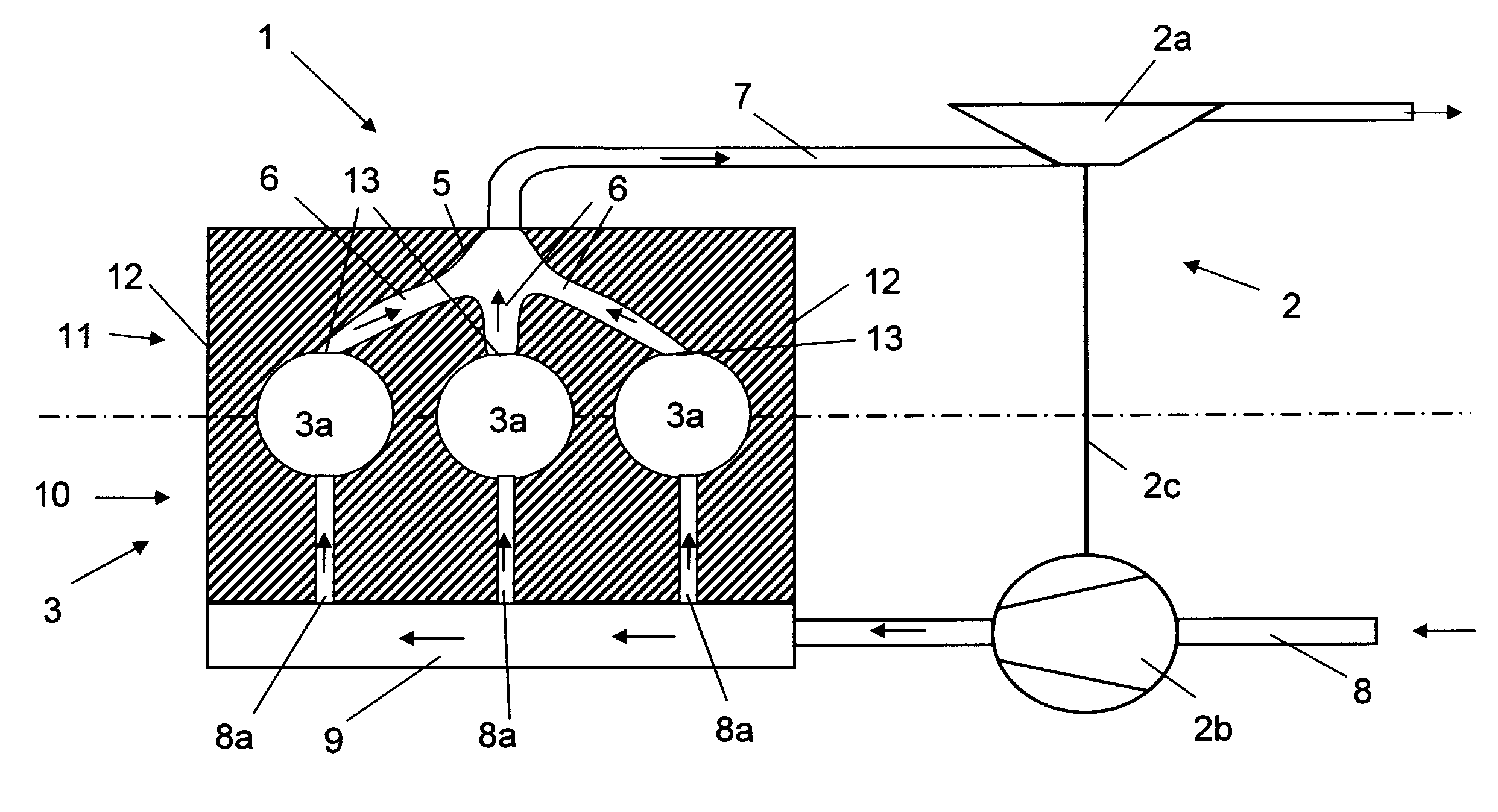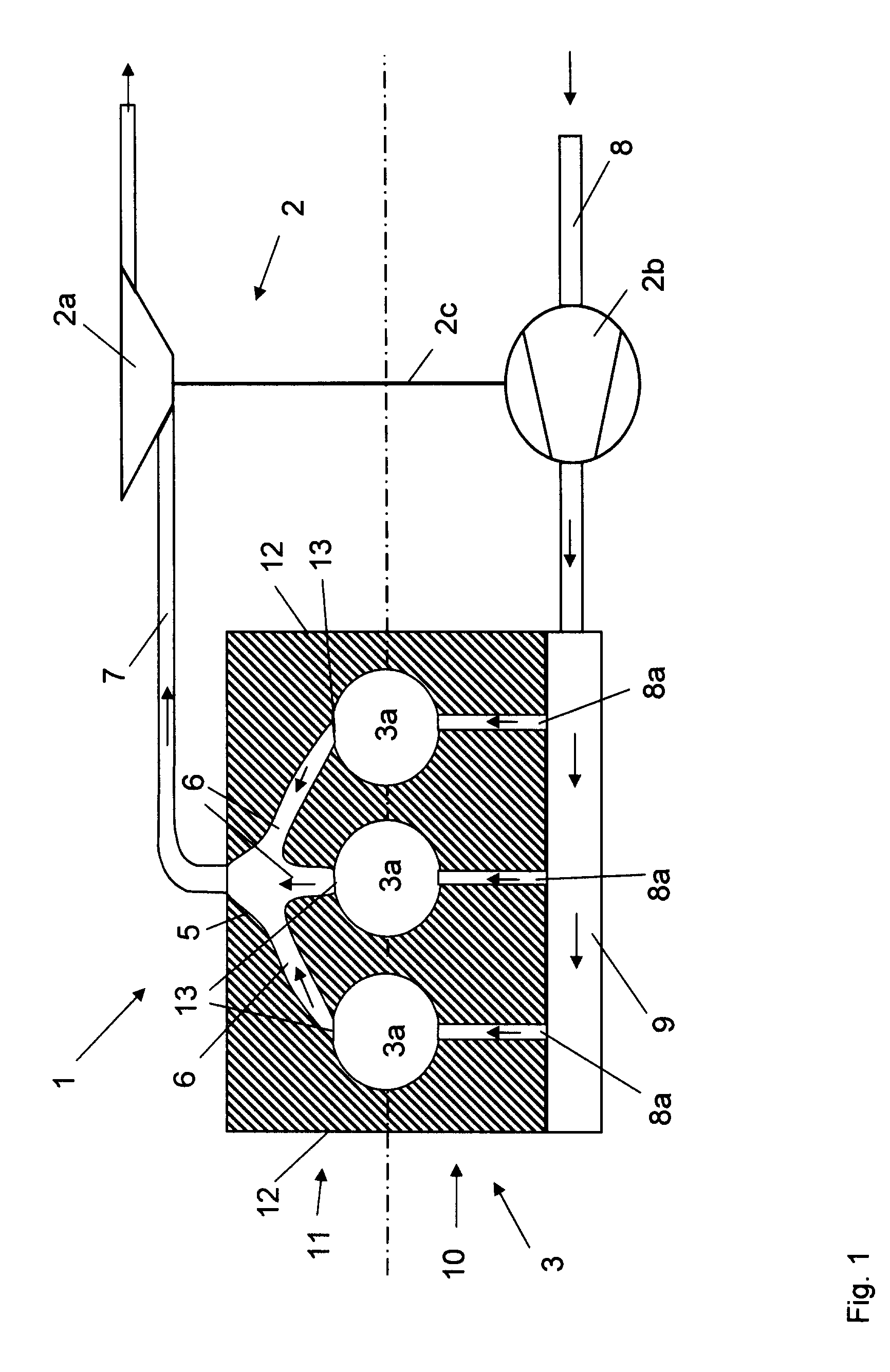Internal combustion engine with exhaust-gas turbocharging
a technology of internal combustion engine and turbocharging, which is applied in the direction of cylinders, charge feed systems, and non-fuel substance addition to fuel, etc., can solve the problems of reducing efficiency, reducing power provided, and observing noticeable torque drop, so as to improve the charge of the combustion chamber, increase the density of exhaust gases, and high recirculation rate
- Summary
- Abstract
- Description
- Claims
- Application Information
AI Technical Summary
Benefits of technology
Problems solved by technology
Method used
Image
Examples
Embodiment Construction
[0086]FIG. 1 shows a first embodiment of the turbocharged internal combustion engine 1 on the basis of the example of a three-cylinder engine.
[0087]The internal combustion engine 1 has a cylinder head 3 with three cylinders 3a which are arranged along the cylinder head longitudinal axis 4 and each of which has an outlet opening 13 adjoined by an exhaust line 6 for discharging the exhaust gases out of the cylinder 3a. The exhaust lines 6 of the three cylinders 3a are merged on the outlet side 11, so as to form an integrated exhaust manifold 5 within the cylinder head 3, to form an overall exhaust line 7.
[0088]To supply the internal combustion engine 1 with fresh air or fresh mixture, an intake 8 is provided on the inlet side 10, which intake 8 opens out into a plenum 9 from where three intakes 8a provide a supply to the cylinders 3a.
[0089]The internal combustion engine 1 is fitted with an exhaust-gas turbocharger 2 which comprises a turbine 2a, which is arranged in the overall exhau...
PUM
 Login to View More
Login to View More Abstract
Description
Claims
Application Information
 Login to View More
Login to View More - R&D
- Intellectual Property
- Life Sciences
- Materials
- Tech Scout
- Unparalleled Data Quality
- Higher Quality Content
- 60% Fewer Hallucinations
Browse by: Latest US Patents, China's latest patents, Technical Efficacy Thesaurus, Application Domain, Technology Topic, Popular Technical Reports.
© 2025 PatSnap. All rights reserved.Legal|Privacy policy|Modern Slavery Act Transparency Statement|Sitemap|About US| Contact US: help@patsnap.com


